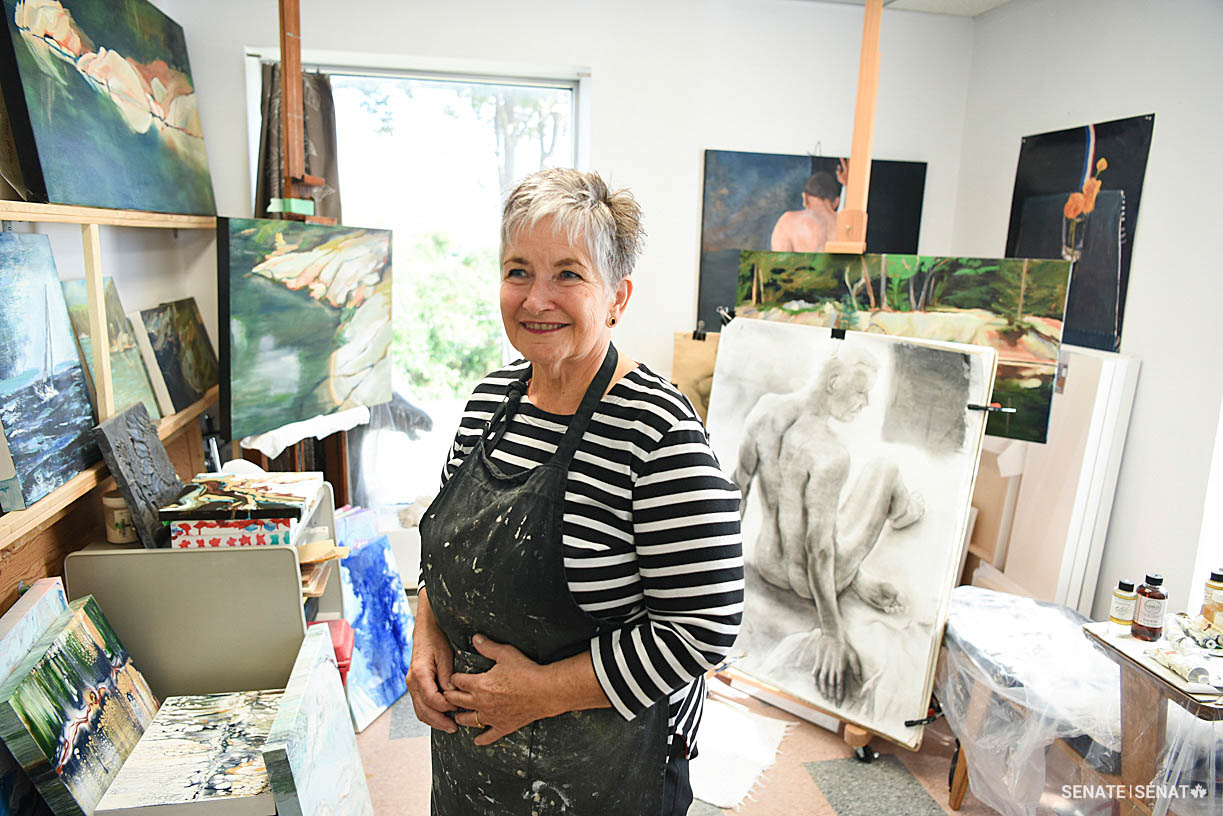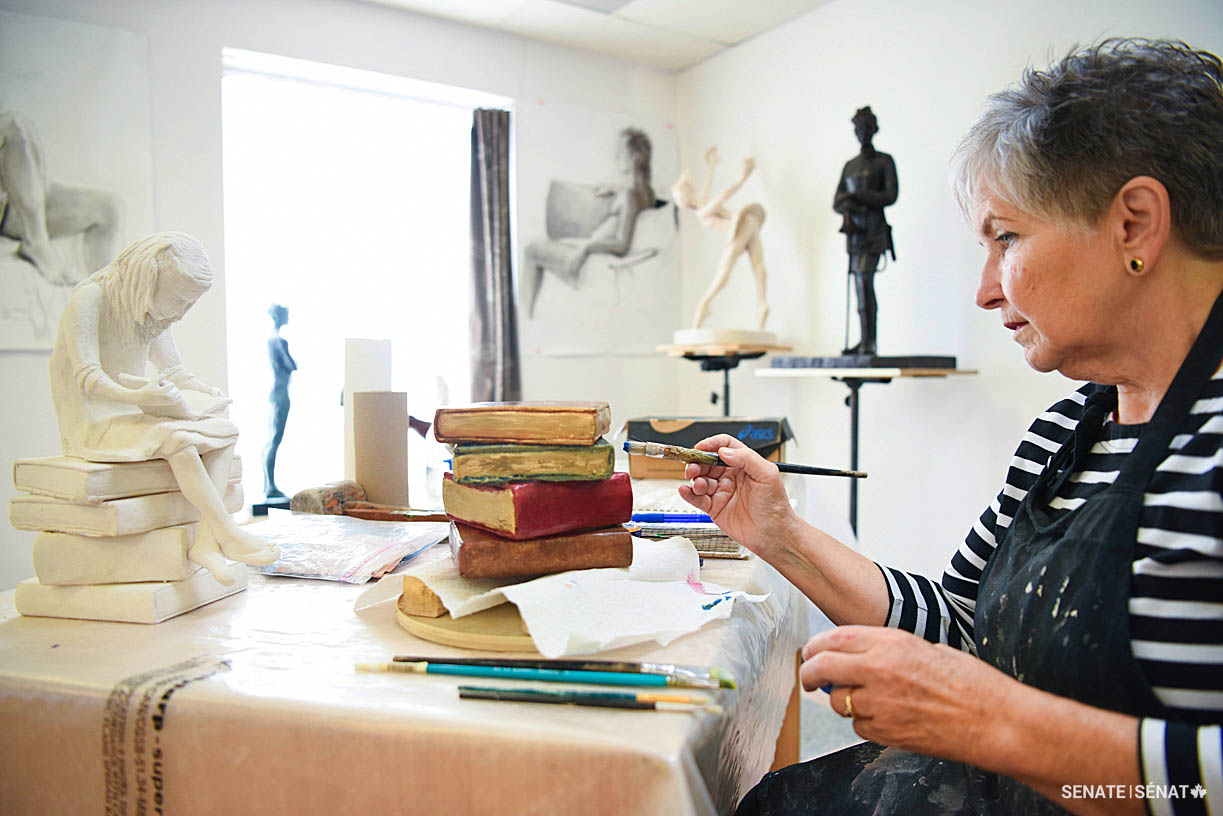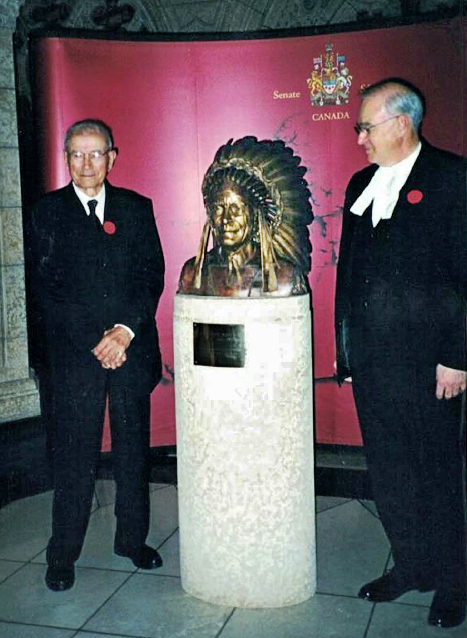Meet the sculptor who memorialized the Senate’s “Gentle Persuader”
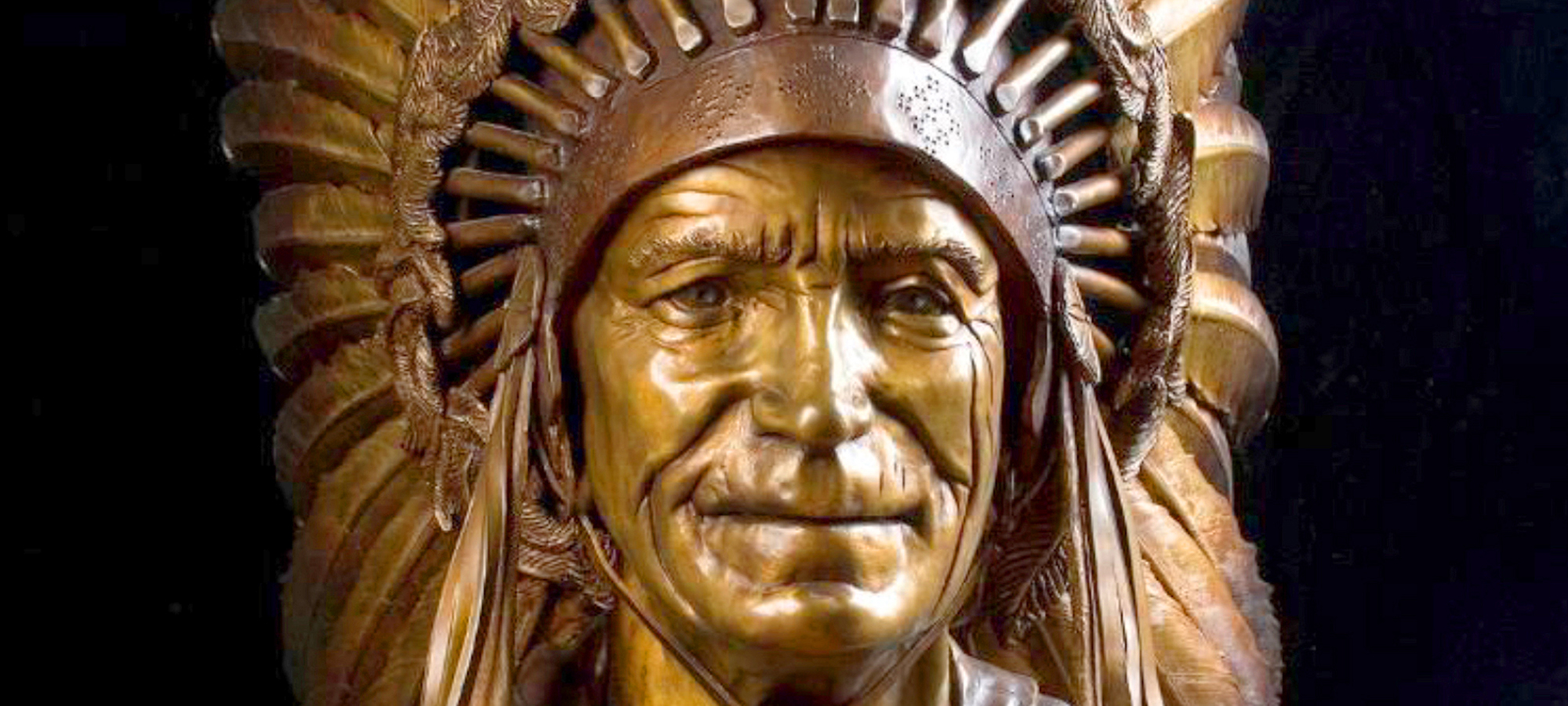
In February 2019, the Senate moved to the Senate of Canada Building, a former train station built in 1912. The Senate will occupy this temporary location while Parliament’s Centre Block — the Senate’s permanent home — is rehabilitated.
Although Centre Block is shuttered for rehabilitation work, Canadians can still experience its art and architecture through the Senate’s immersive virtual tour.
Gatineau sculptor Rosemary Breault-Landry was excited but anxious.
It was October 25, 2001. The Senate foyer was packed with parliamentarians and First Nations representatives for the unveiling of her bronze portrait bust of the Honourable James Gladstone, the first Canadian senator to belong to a First Nation.
Ms. Breault-Landry had laboured for a year and a half to perfect every detail. Every stitch on the ceremonial headdress was exact. You could trace the barbs on every feather.
She worked particularly hard to capture the senator’s quiet authority — a characteristic that Senate Speaker Daniel Hays alluded to that evening when he called Senator Gladstone “the Gentle Persuader.”
But what really mattered was how she’d rendered the nose.
“James Gladstone’s family was there, including his son Fred, and he was a man of few words,” said Ms. Breault-Landry. “He introduced himself and said, ‘I just want to see the nose and I’ll know if it’s good or not.’
“I held my breath while he examined the bust. At last, he said, ‘Yeah, you got his nose right.’”

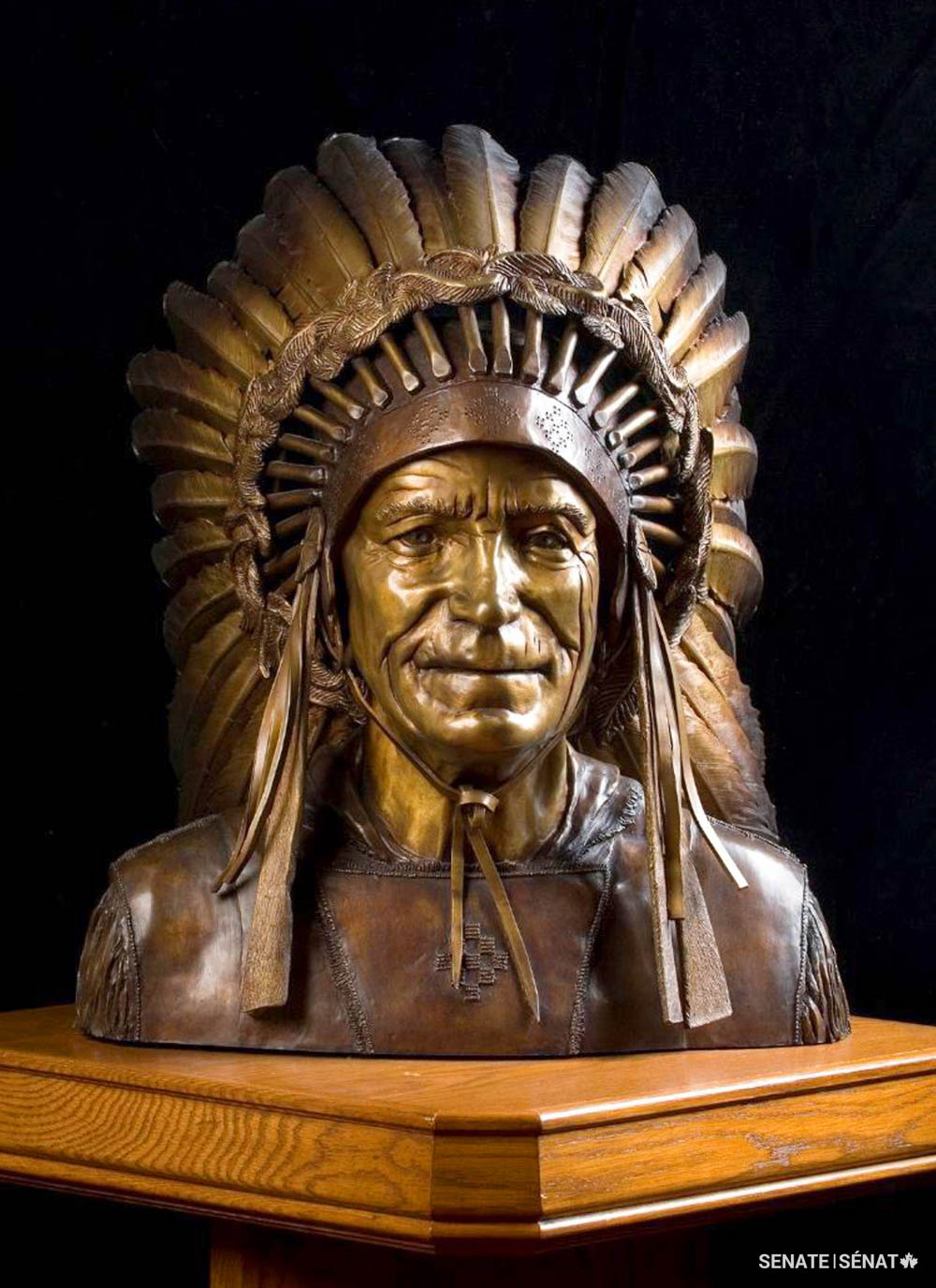
The Gentle Persuader
The ceremony took place almost exactly 30 years to the day James Gladstone, a lifelong advocate for Indigenous rights who helped secure the vote for his people, had died.
Cree by birth, he had been adopted by the Blood Tribe, part of the Blackfoot nation, in 1920. He made his home on the Kainai First Nation, 200 kilometres south of Calgary.
Ambitious and restless, he tried his hand at anything that would earn him a living, working at times as a coal miner, trucker, printer, RCMP scout and interpreter.
He established his own farm in 1921 and inspired neighbours to adopt the latest farming practices.
He was the first in the community to own a tractor and the first to connect his house to the electrical grid.
His eloquence in advocating for his community, combined with his quiet diplomacy, steered him into politics. He was elected president of the Indian Association of Alberta in 1949 and lobbied Ottawa to make improvements to the Indian Act.
He quickly became a national political figure. Prime Minister John Diefenbaker, determined to extend the vote to all First Nations peoples, appointed Mr. Gladstone to the Senate in 1958.
He delivered his introductory speech partly in Blackfoot “to place in the official debates a few words in the language of my people, the Blackfoot Indians, as a recognition of the first Canadians.”
Two years later, his persistence and persuasiveness helped Status Indians win the unconditional right to vote.
Over the course of his 13 years in the Senate, he chaired several committees, including the Joint Committee on Indian Affairs and the Special Committee on Land Use.
His health failing, he retired in March 1971; he died of a heart attack six months later.
Following her muse
Rosemary Breault-Landry was working as a nurse in Québec City when a career in art came calling.
“It was Yvonne Dorian, an amazing sculptor and teacher from Montréal, who pushed me,” said Ms. Breault-Landry. “She encouraged me to make art a full-time career.”
“Nursing had been very good to me. It allowed me to raise a family, but I came to realize that making art was my happy place.”
A three-week summer course at the Ontario College of Art, now OCAD University, in Toronto turned into a four-year full-time program, at the end of which she returned to Québec City to become a full-time sculptor and art teacher.
A career-changing opportunity soon arose. In October 1998, she came across a notice from the Senate, inviting artists to submit proposals for a sculpture of Senator Gladstone.
“I sent my submission the day before the deadline,” said Ms. Breault-Landry. “A week later, a manilla envelope arrives.
“I was expecting to read ‘We regret to inform you…’ but, no — I had won!”

